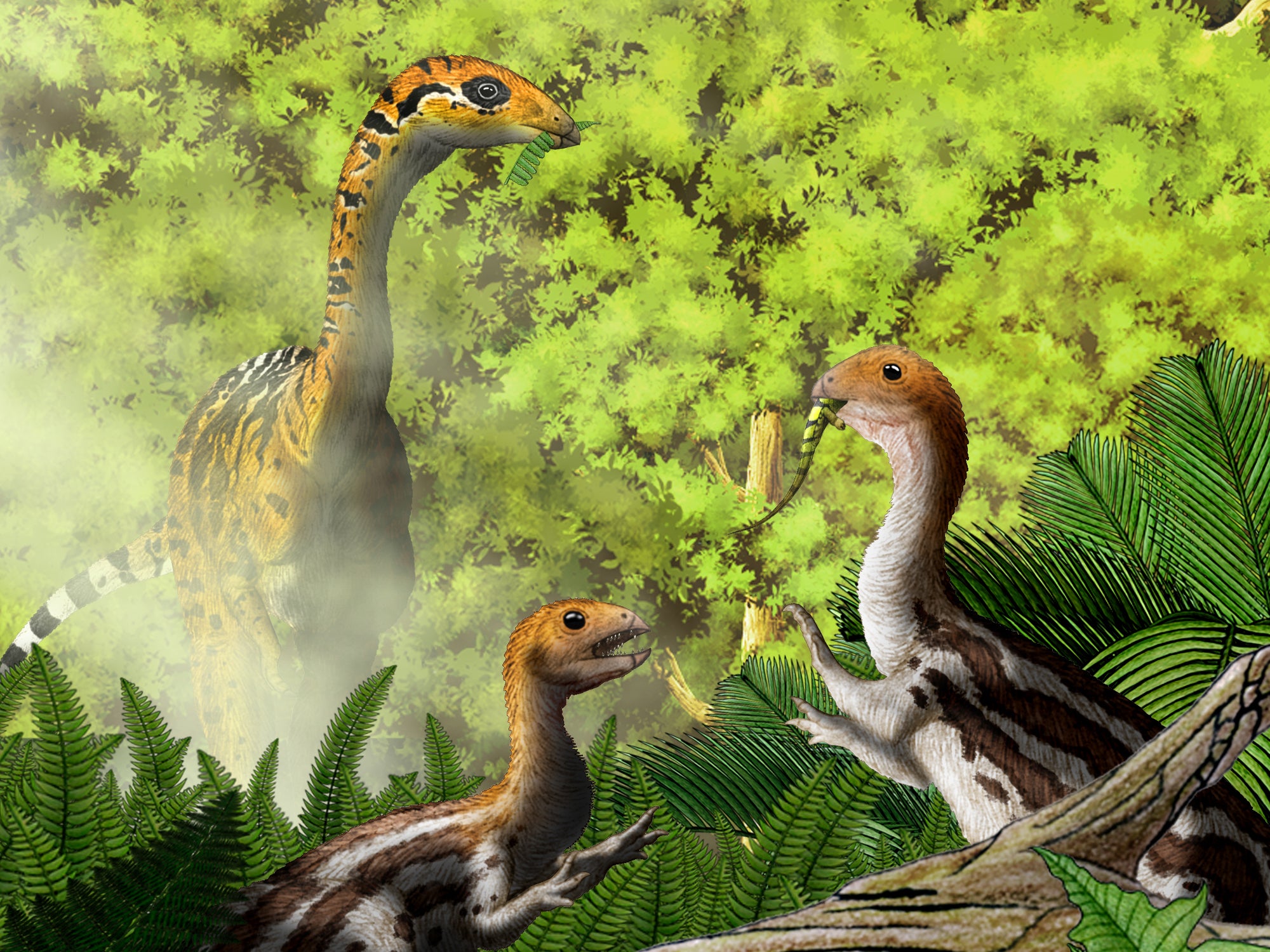Meat-eating dinosaur grew up to become a vegetarian, scientists discover
Limusaurus dinosaurs had teeth when young but gradually lost them and turned vegetarian

Your support helps us to tell the story
From reproductive rights to climate change to Big Tech, The Independent is on the ground when the story is developing. Whether it's investigating the financials of Elon Musk's pro-Trump PAC or producing our latest documentary, 'The A Word', which shines a light on the American women fighting for reproductive rights, we know how important it is to parse out the facts from the messaging.
At such a critical moment in US history, we need reporters on the ground. Your donation allows us to keep sending journalists to speak to both sides of the story.
The Independent is trusted by Americans across the entire political spectrum. And unlike many other quality news outlets, we choose not to lock Americans out of our reporting and analysis with paywalls. We believe quality journalism should be available to everyone, paid for by those who can afford it.
Your support makes all the difference.Scientists studying a dinosaur called the limusaurus have made a surprising discovery – it developed sharp teeth for eating meat soon after it was born, but lost them as it grew up and became vegetarian.
By comparing 13 different fossils, researchers were able to observe the growth stages of the slender-bodied, short-legged dinosaur which lived in what is now east Asia.
They found the limusaurus, whose name means “mud lizard”, had teeth in its early years, suggesting it had an omnivorous diet including meat.
These gradually disappeared to make way for a beak instead as it transitioned to a plant-based diet in adulthood, making it the first known reptile to lose teeth during its development.
Shuo Wang, a paleontologist at Capital Normal University in Beijing, said he and his team had discovered “a very rare, very interesting phenomenon”.
“Toothed jaws in juvenile individuals transition to a completely toothless beaked jaw in more mature individuals during development,“ he explained.
The researchers reconstructed the growth of the limusaurus, a type of ceratosaurian theropod, between the ages of less than a year to 10 years old.
Mr Wang and his team began collecting limusaurus fossils in 2001, but did not immediately realise they were from the same type of dinosaur because they all looked so different.
“Initially, we believed that we found two different ceratosaurian dinosaurs from the Wucaiwan Area, one toothed and the other toothless, and we even started to describe them separately,” he said.
But when they studied the dinosaurs’ characteristics in greater detail, the scientists found the only feature not remarkably similar was the teeth and concluded all the fossils were limusaurus remains.
The findings, published in the journal Current Biology, could provide significant insight into the evolution of the beak, they said.
The researchers now plan to study changes to the limusaurus digestive system and skeleton to further understand these apparent changes in the dinosaur’s dietary habits.
While the limusaurus is the only reptile to be shown to lose its teeth, the phenomenon has been observed in some fish and one amphibian.
Join our commenting forum
Join thought-provoking conversations, follow other Independent readers and see their replies
Comments